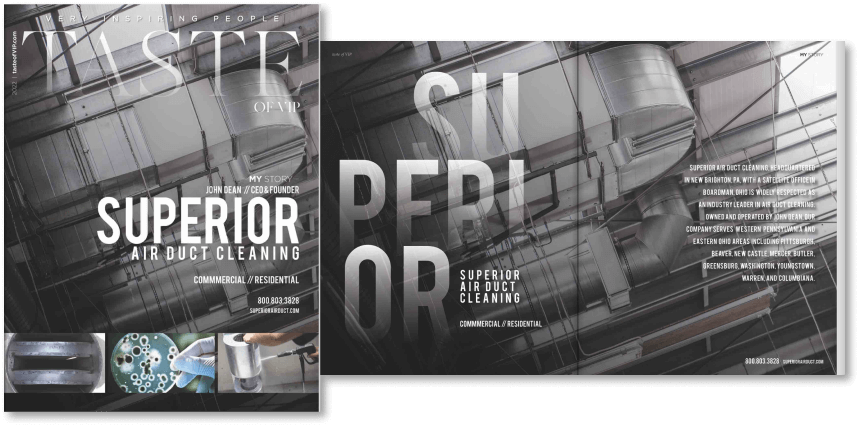Ductwork is designed to provide comfortable temperatures and preserve indoor air quality. Have you ever wondered how air ducts are formed or what they are made of? Today, Superior Air Duct Cleaning provides an overview of ductwork design, including the different shapes and materials.
Related Post: How Does an Air Duct System Work?
Air Duct Materials
Air ducts are usually made of sheet metal, but other metals can be used under certain circumstances. Here are the most popular types of duct materials and what they are used for:
Galvanized Steel
Galvanized steel is the most common material used in ductwork fabrication. Steel ductwork expands and contracts as it heats and cools.
Aluminum
The next popular duct material is aluminum. Aluminum ductwork is often used for cleanroom facilities and special exhaust systems.
Stainless Steel
Next, stainless steel is a material used in air ducts for kitchen and fume exhaust. Some of these ducts are exposed while others are concealed.
Carbon Steel (Black Iron)
Carbon Steel is commonly used in applications that involve flue pipes and chimneys.
Non-Metallic Ducts
It might surprise you that not all ducts are made of metal. Fiberglass Reinforced Plastic (FRP) is mainly used for chemical exhaust and underground duct systems.
- Fiberboard is made from fiberglass strands that are bound by resin. It maintains temperatures longer, but due to its textured exterior, trapped dirt is harder to clean.
- Fabric ducting (aka textile ducts) is often made of absorbent polyester material and can be seen in laboratories, school cafeterias, or large offices. Lastly, some ducts are composed of a softer flex material.
- Flex ducts have an inner liner that is supported by a wire coil and covered by insulation. This flexible ductwork is used in both new construction and older homes.
Related Post: Fiberglass Vs. Cellulose Insulation — A Comparison Guide
Air Duct Shapes
Ducts are typically formed by folding sheet metal into the required shape. The most common shapes are round, rectangular, and oval ducts. There are some advantages and disadvantages of each duct shape.
Round
Round ducts are the most efficient in transporting air. They use less material than rectangular ducts to handle the same amount of air.
Rectangular
Square or rectangular ducts are designed to fit building construction. While they fit into walls and above ceilings, these ducts use more metal than round ducts to produce the same airflow rate.
Oval
Oval ducts are flat and have smaller height requirements than round ducts. These ducts tend to become more round when under pressure.
Related Post: Different Techniques Used to Clean Air Ducts
Various Sub-Types of Air Duct Shapes
- Bend ducts are used for tight changes in corners in cramped areas like attics. They’re easily crimped on one end to fit into the pipe or flex-duct that has an equal diameter. There are various types of bend ducts, for instance, the 90-degree bend duct.
- Three-way air ducts are designed to redistribute airflow in multiple directions.
- Spiral air ducts are a subset of round ducts that offer a quieter alternative to rectangular air ducts, where air must move along sharp edges, turning vanes, and dampers. The spiral design allows for air to flow more easily.
Improve Your Health, Comfort, and Air Quality
Regardless of the shape and material, your air ducts need to stay clean and clear. Superior Air Duct Cleaning is dedicated to improving your health and air quality. For more information about our duct cleaning services, browse our website or call (724) 847-9444.



